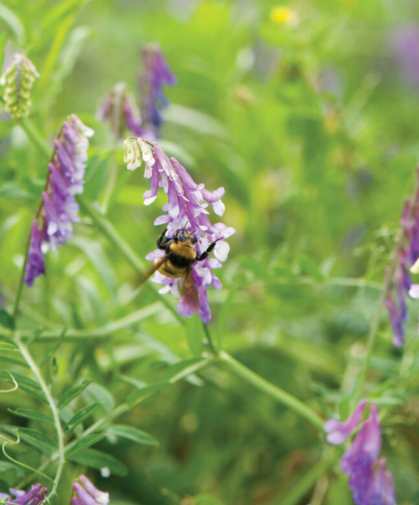- Exceed Peanut Cowpea Lespedeza Mung Bean Inoculant | Label
- Peas (Cover Crops) | Key Growing Information
- Exceed Pea, Vetch & Lentil Inoculant | Information Sheet (PDF)
- Alfalfa & True Clover Inoculant | Label
- Exceed Peanut Cowpea Lespedeza Mung Bean Inoculant | OMRI Certificate
- Soybean Inoculant | Label
- Exceed Alfalfa/True Clover Inoculant | OMRI Certificate
- Exceed Peat Rhizobium Inoculants | SDS (PDF)
- Clovers & Alfalfa | Key Growing Information
- Exceed Pea, Vetch & Lentil Inoculant | OMRI Certificate
- Sunn Hemp | Key Growing Information
- Exceed Soybean Inoculant | Information Sheet (PDF)
- Exceed Alfalfa/True Clover Inoculant | Information Sheet (PDF)
- Inoculants | General Information Sheet
- Hairy Vetch | Key Growing Information
- Exceed Soybean Inoculant | OMRI Certificate
- Exceed Garden Combination Inoculant | Information Sheet (PDF)
Hairy Vetch - Key Growing Information

Uses: Prolific, viny growth. Very cold tolerant and widely adapted. Good nitrogen fixation with quick release after termination.
Culture: Can be sown in spring, but most commonly used in fall as an overwintered cover crop with a winter-hardy grain. For best results, plant at least 30–40 days before a killing frost. Drill ½–1" deep into a well-prepared bed or broadcast and lightly rake or disc in. Inoculate with "pea/vetch" type inoculant (#7534) for nitrogen fixation. Hardy in all but severe winters when late summer or fall sown.
Seeding Rate: 1 lb./1,000 sq.ft., 25–40 lb./acre. Lower rates are acceptable when drilling seed. For broadcasting, or if you are seeding late, use higher rates. Good sown with rye or oats; a mix of 20–25 lb./acre of vetch and 70 lb./acre winter rye is suitable under many conditions.
Light Requirements: Full sun to part shade.
Soil Requirements: Well-drained soil. Ideal pH of 6.0–7.0.
Height: 3–4'
Termination: Spring growth is vigorous after a fall seeding. Termination is easiest after flowering but produces hard seed and can become weedy if not terminated before seed set. Mowing or crimping is effective if properly timed, but less effective if not in full flower. Tillage is effective, but difficult if not mowed first, due to vetch's viny nature. Tarping can be effective but is typically best after mowing or crimping.

